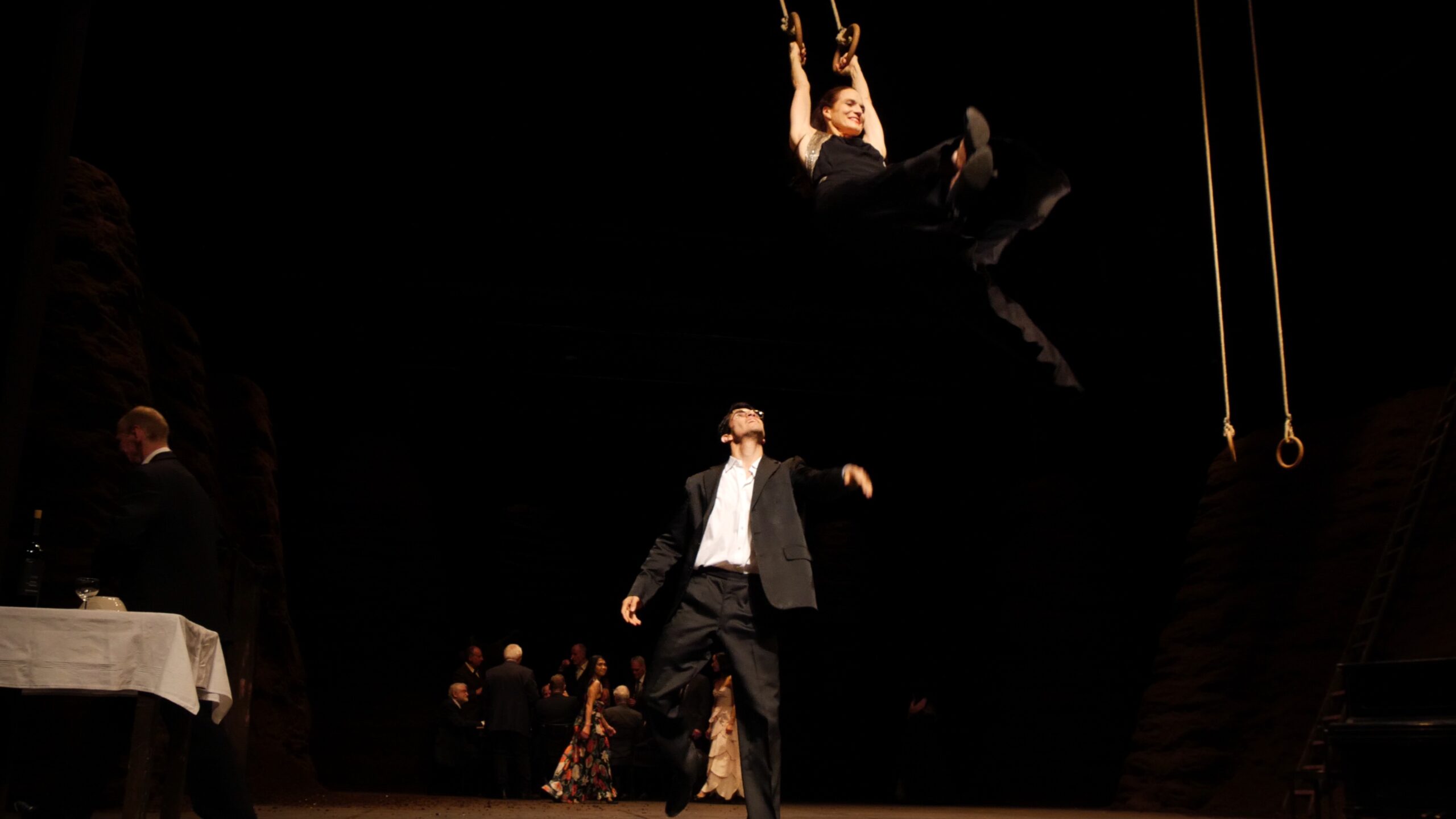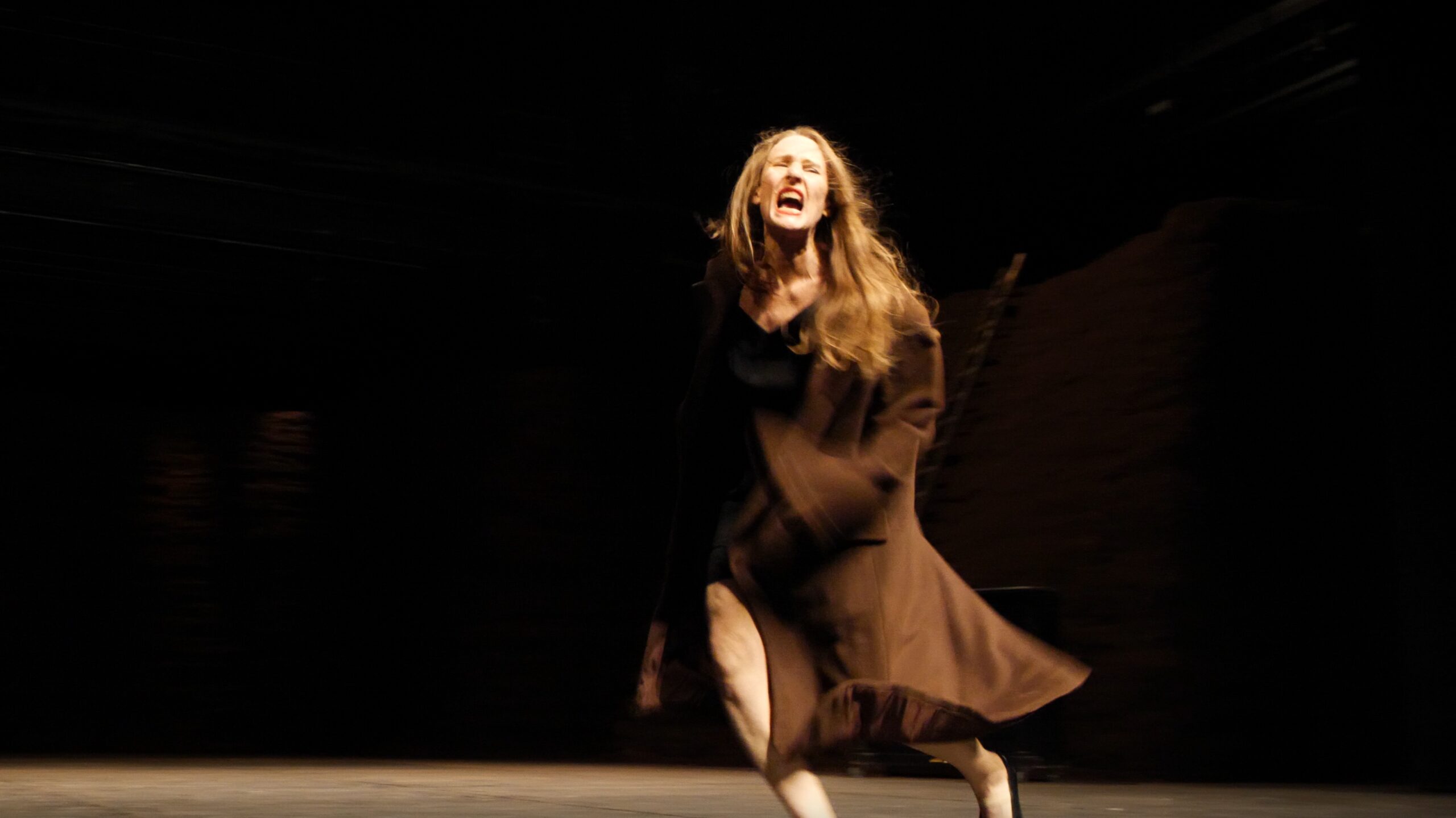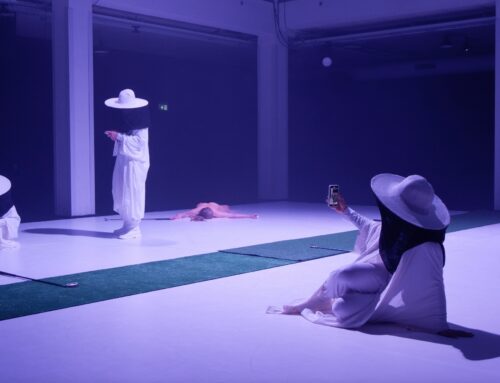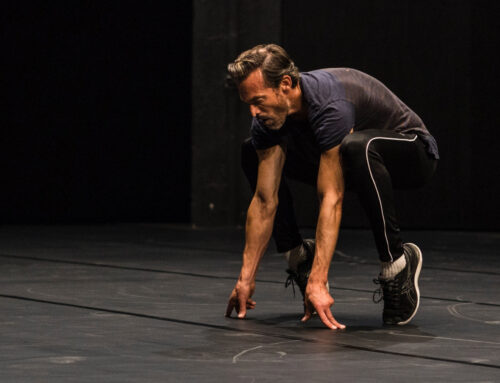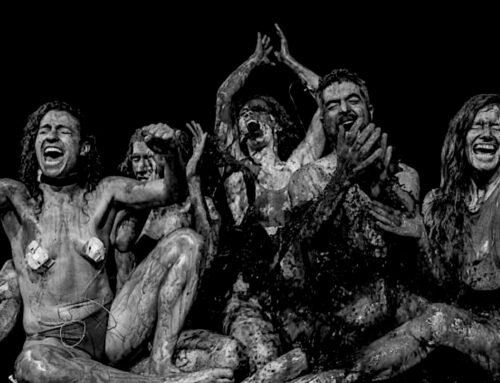Restaging of VIKTOR – dance piece by Pina Bausch
„Death is omnipresent…“
On 26 June, the revival of Pina Bausch’s 1986 piece, which was last shown in 2017, celebrated its premiere with a new cast and Breanna O’Mara and Scott Jennings as guests, who had a lasting impact on the piece in its last mounting
HERE you find our Video-Impressions
Night review by Klaus Dilger
Impressive stage design
Whatever may have originally inspired Pina Bausch and her ingenious set designer Peter Pabst to surround the stage with six-metre-high, reddish-brown earth walls – and may it actually have been a similar-looking venue on the guest performance tour, as some claim – after the Chernobyl nuclear disaster on 26 April 1986, just a few days before the production’s premiere of „VIKTOR“ in Wuppertal, this stage must have felt like the bottom of a mass grave, from which the Bausch resurrects her panopticon of more or less lost souls or lets them sink into it.
Thirty-eight years later, it is no longer the radioactively contaminated cloud that is spreading death across Europe from the Ukraine; it is the breath of war, after Putin’s Russia invaded the country more than two years ago, that makes death omnipresent. And even what is left of life – and of love (and probably also of the consciousness and memory of the audience) feels strangely dead on stage.
The only people who perhaps wanted to be a couple in Bausch’s VIKTOR are already lying dead on the stage and are married right at the beginning of the play (and again in a repeat at the very end) by a magistrate or chaplain, post mortem so to speak, after Julie Shanahan, armless like a dressmaker’s dummy, has silently dribbled an elegant red dress onto the stage ramp in the first image.
At the time, in view of the Chernobyl disaster, the audience could probably see this as the prelude to a post-atomic fashion show, which provided the bizarre framework for the following associative round of memories and roles, which soon developed into a brilliant stage spectacle, with Blanca Noguerol Ramirez as the auctioneer (outstanding in the role of Silvia Kesselheim), who chases her colleagues across the stage at breathtaking speed to sell off the memorabilia or excavated objects they are presenting.
Meanwhile, in the auditorium, Michael Strecker tries to win over a few buyers for presumably shady deals and, like the dancers who later dance in pairs in a long line through the empty sixth row of the audience, carries the stage action into the stalls of the opera house. (At the beginning of dance theatre in the eighties, this was still a tried and tested means of breaking down the „fourth wall“)
High above the stage, from the edge of the abyss, Andrey Berezin begins to carefully dig the grave beneath him in small doses.
Where Shanahan (- a class of her own on the opening night) tripped armlessly, the equally outstanding Breanna O’Mara then whips herself leglessly up the stage ramp with her wide and wild sequences of arm and upper body movements.
„My name is Viktor… and I’m back“, a dark voiceover reveals O’Mara to be possessed by a ghost called „Viktor“, to whom the play obviously owes its name. He will drive the young, elfin-looking woman into a wild seated dance time and time again, in which her long reddish-blonde hair with her endlessly long arms and agile upper body propel her seemingly lifeless lower body.
Bausch invents strong images and characters. Many of them appear as if they have just stepped out of a Fellini film. Weird, bizarre, ludicrous, beautiful and mean and yet mostly like soulless avatars or simply just flesh, like Letitia Galloni wraps around her toes before squeezing into her pointe shoes with a provocative look and then doing a „few rounds on pointe“ with beautiful arm and body movements to Tchaikovsky’s music.
Yes, dance itself is also reflected as a performance in VIKTOR, as it was previously in NELKEN and as other choreographers have done in these times.
Excellent dancing…
There are repeated hints of voyeurism and even prostitution. Older men dance with young girls, Ditta Miranda Jasjfi repeatedly puts her blue dress over the head of Franko Schmidt, who is sitting on a chair, and sticks out her tongue with a silver coin on it. There are dozens of „shugar daddies“ over seventy who dance with young girls, but older ladies also like to buy a good-looking youngster in this piece.
The dancing is rather rare and when it is, it is almost always excellent in formations, mostly to old Italian folk songs. Choreographed, strictly separated female and male formations, which Scott Jennings (also convincing), in the role of Dominique Mercy, as a tormented, evil old woman, repeatedly drives apart or brings together, or is it VIKTOR who drives him?
Pina Bausch’s repertoire of ideas seems overflowing and yet, or perhaps because of this, the piece is several cigarette lengths too long – and there is almost no interruption to the smoking in VIKTOR.
Strong moments… even of loneliness
Not everything in this production is as brilliant as the wonderful moments when Julie-Anne Stanzak, standing almost unnoticed in the right-hand portal, accompanies the action on stage for several minutes with her beautiful voice and soft singing, or the simultaneously authentic and bizarre scene in a dingy trattoria with Aida Vainieri, Blanca Noguerol Ramirez and Maria Giovanna della Donne, in which Franko Schmidt waits in vain for his food and in front of whose door the presumed cook Noguerol, together with Julie-Anne Stanzak, are watering at the mouth when they think of the fat, juicy rat that walked past yesterday.
Fellini, Bausch and Rome…
Yes, Rome, the city that helped produce the piece, does have more to offer than its well-known sights… even if the associative images are rather rare compared to Pina Bausch’s flood of ideas, such as when Ditta Miranda becomes one of the countless Roman fountains whose mouth spouts the water with which her colleagues wash their hands, feet and faces.
The „eternal city“ becomes most tangible through its proximity to Fellini, his characters and types. And yet Bausch also distances himself from it at the same time. Where in Fellini’s work the greatest poverty can stand alongside beauty and elegance and yet both convey a deep love of life that is touching, Bausch resolves a scene, for example, that could have come from a film by the Italian master director, when Scott Jennings and Julie-Anne Stanzak sit opposite each other as an elegant couple and remain silent for minutes by having Stanzak recite the modified „Sterntaler Märchen“ from Büchner’s „WOYZEK“. Nihilistic and without any hope.
The moon as a piece of rotten wood, the sun as a wilted sunflower and the stars as golden beetles. „… and when the child came back to earth, it was an overturned chamber pot and it sat down and cried, still sits there and cries and is all alone…“
Sociologists have recently identified loneliness as one of the biggest problems of our time. In this respect, Pina Bausch’s VIKTOR is highly topical, because there are only lonely people here, even when two people dance naked in the same black skirt. (One of the scenes in VIKTOR that seems dispensable)
The image of oneself, the selfie, which only needs others as decoration and stage set to confirm or create one’s own status symbols, may be one of the reasons for this. Have pathological appearances, such as exaggerated narcissism, become normal because they represent a majority in (capitalistically characterised) societies?
Possessed
There are also plenty of possessed people in VIKTOR and when the chaos really breaks out, almost staged as a dream sequence, they all run riot, including the gentlemen, now in white doctors‘ coats. Out of this chaos, harmony emerges almost abruptly for the first time. Dancers smear butter sandwiches and some jam on top of them and then hand them out to the audience, where at the beginning of the evening there were just two cobblestones. Two pairs of gymnastic rings are lowered from the laced floor, which are wonderful for swinging… But then everything starts again from the beginning: the armless woman in the red dress, the dead bride and groom, the „star tale“ and the legless woman with the long red hair, behind whom all the dancers now line up legless with their heads bowed and move slowly swaying towards the audience, while the light slowly goes out over this society.
Pina Bausch’s VIKTOR is a strong piece, despite its obvious length. Many of its images and above all the dance formations and their music will remain in the memory. As will the fact that the revival in 2024 featured a convincingly dancing, authentically acting ensemble on the Wuppertal opera stage.




